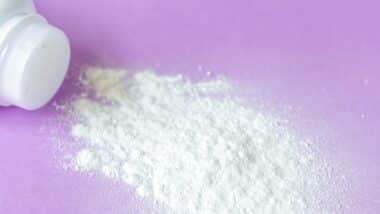 Also known as a coal worker’s pneumoconiosis (CWP), black lung disease is caused by long term exposure to coal dust, which makes coal miners and those who work around coal the most at risk for this disease.
Also known as a coal worker’s pneumoconiosis (CWP), black lung disease is caused by long term exposure to coal dust, which makes coal miners and those who work around coal the most at risk for this disease.
The coal particles build up in the lungs, which can cause inflammation or fibrosis, and even necrosis of the lung in serious cases. In addition to exposure to coal dust, causes of black lung disease can include chronic inhalation of other forms of dust, including silica and asbestos.
It was estimated that approximately 25,000 people died from black lung disease in 2013, which was less than the 29,000 deaths in 1990.
However in 2018, it was recently noted by the National Institute of Occupational Safety and Heath that the black lung may have made a comeback in north central and south central West Virginia, where, according to The Conversation, the coal mining industry is still strong.
What causes black lung disease?
Along with coal dust, the most common substances that are known for being causes black lung disease include asbestos and silica, which is rock and sand dust.
Black lung disease gets its name from the coal dust inhaled, which often causes them to turn the lungs into a blacked color as the disease progresses. Here is a breakdown of exposure that causes black lung disease:
- Coal miners could be exposed to coal particles and silica dust due to drilling silica containing rocks and just general handling of coal, which ultimately exposes them to deadly substances.
- Beryllium is another dangerous substance that can cause serious problems for patients. It is a lightweight metal this often used in electronics, aerospace, and nuclear power plants. This substance can also cause lung inflammation when particles are released into the air during melting or grinding.
- Asbestos is commonly found in manufacturing plants and for its fire and chemical resistant nature, which made it ideal for various parts of the coal mining industry. It is important to note that asbestos lung disease could take decades to progress to the point of showing symptoms, which often results in latent diagnosis and limited treatment options.
- Crystalline silica are particles from sand and rock, with sandblasters, stonemasons, and foundry workers at the most at risk for exposure. Similar to asbestos lung diseases, it can take many years for victims of low level exposure to experience symptoms, chronic simple silicosis, in which the lungs become inhaled due to small nodules. However in cases of “progressive massive fibrosis,” the small nodules can form a large mass together and cause serious respiratory problems.
What are the symptoms of black lung disease?
- Coughing (with or without mucus)
- Shortness of Breath
- Tightness of Chest
- Easily Exhausted during Daily Activities or Rest Periods
- Hypoxemia (low blood oxygen levels)
Can black lung disease be treated or cured?
There is currently no cure for black lung disease, and the treatments vary between patients. The treatment strategies typically revolve around preventing further damage to the lungs, decreasing symptoms, and maintaining an adequate quality of life.
Depending on the severity, patients could be prescribed inhalers if their symptoms are similar to asthma or chronic obstructive pulmonary disease, or physical therapy could be recommended to improve the patient’s ability to exercise.
Other patients may require an oxygen mask to help with breathing, either during times of activity or while they sleep. In the most severe cases, the doctor may recommend the patient for a lung transplant.
If you or someone close to you developed black lung after using a 3M dust mask, you may benefit from participating in a free 3M dust mask lawsuit investigation. Learn more by filling out the short form on this page.
This article is not legal advice. It is presented
for informational purposes only.
ATTORNEY ADVERTISING
Top Class Actions is a Proud Member of the American Bar Association
LEGAL INFORMATION IS NOT LEGAL ADVICE
Top Class Actions Legal Statement
©2008 – 2026 Top Class Actions® LLC
Various Trademarks held by their respective owners
This website is not intended for viewing or usage by European Union citizens.
Get Help – It’s Free
Join a Free 3M Dust Mask Lawsuit Investigation
If you qualify, an attorney will contact you to discuss the details of your potential case at no charge to you.
PLEASE NOTE: If you want to participate in this investigation, it is imperative that you reply to the law firm if they call or email you. Failing to do so may result in you not getting signed up as a client or getting you dropped as a client.
E-mail any problems with this form to:
[email protected].
Oops! We could not locate your form.












